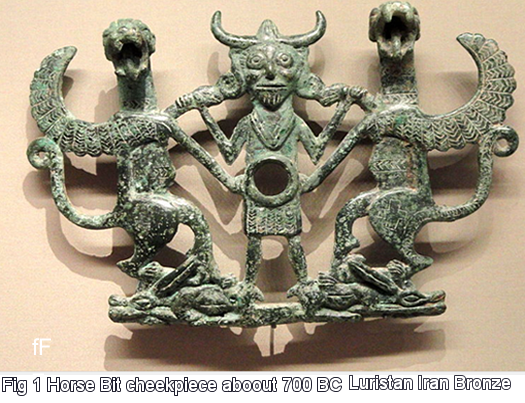Bronzes
Bronze is any alloy that is ca.85-95 % Cu, with the other 5-15% made up of mainly of Sn or As, though other metals can be present in small amounts. It turns out that this range of chemistry produces an alloy that is harder than copper even though it melts at a lower temperature. A low amount of Sn or As does not improve the copper enough, and a higher amount makes the alloy so brittle that it is useless. Tin bronze is not too difficult to work, and melts at 950 0C rather than the 1084 0C of copper, making it easier to cast. Both bronzes make strong hard tools and weapons that retain an edge as well or better than stone, once they are strengthened by hammering.
The oldest tin alloy bronzes data back around 4500 – 3500 BC and were found at an archaeological site, Pločnik in Serbia and in ancient Sumerians (Persia) in the Tigris-Euphrates Valley (Mesopotamia). Historians are unsure how this alloy was discovered, but believe that bronze may have first been made accidentally when rocks rich in copper and tin were used to build campfire ring. Before this point, the most common tool 6500 years ago was the stone axe. This replacement of stone tools with bronze was an important indicator of the start of the Bronze Age in different parts of the world. The bronze casting process allowed for more possibilities in terms of the shapes which could be created, lending themselves better to the manufacture of weapons and tools.
Around 3000 BC, bronze-making spread to more parts of Persia, where bronze objects such as ornaments, weapons, and chariot fittings have been found. Lorestan bronze in a time range between 3000 prior to the seventh century BC masterpieces are products of history (fig1).

Diversity, precision, skill, finesse,technique and design and perfect form of these products has caused a lot of discussion on this will be revealed. Common themes in painting and bronze casting Lorestan partly by borrowing from Persian legends and myths, But the culture of the Caucasus and Mesopotamia and Asia Minor has been deprived. Bronzes appeared in both Egypt and China around 2000 BC. The bronze castings (objects made by pouring liquid metal into molds) were made in sand, and this method is sometimes still used, even for casting bells. However, clay and stone molds were developed later on, and clay is usually used nowadays for bells.Zinc, lead, and silver were added to bronze alloys by Greek and Roman metalworkers for use in tools, weapons, coins, and art objects
By 2500 2000 BC, tin was the overwhelming preference for manufacture of bronze. Casting techniques had also become sophisticated enough to create human sized statues as well as smaller lost-wax figurines. Gunpowder was discovered in 9th century (800 AD) in China where bronze was used in early firearms. This technology spread to Europe in the 13th century due in no small part to the fact that bronze had low metal-on-metal friction, making them perfect for firing iron cannonballs.
In 1904 Bronze had been used in the manufacture of various types of medals in contemporary times, the bronze medal is most associated with the award of 3rd place in sporting competitions and similar events. Today, bronze has a wide variety of applications which see it in everyday use

